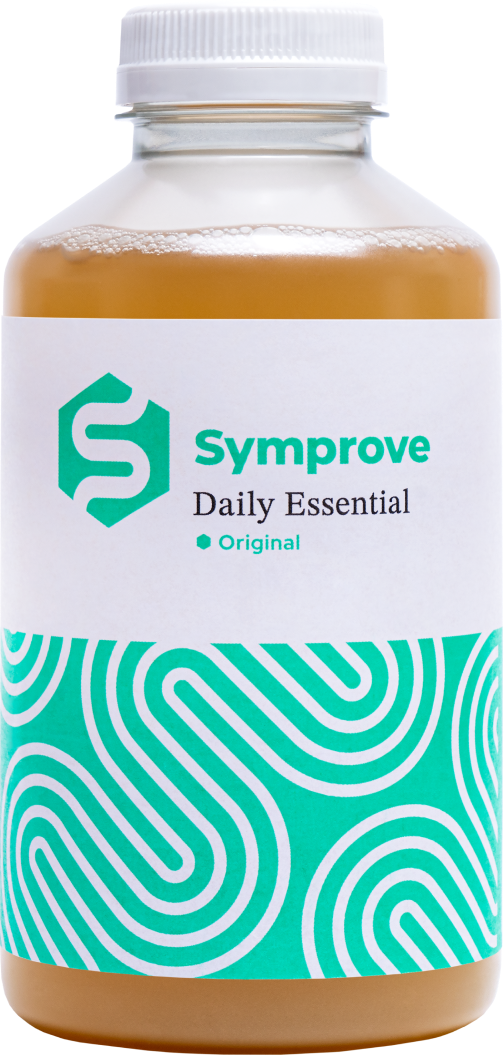In February 2024, a comprehensive umbrella review concluded that ultra-processed foods (UPFs) pose a significant risk to human health, warranting public health measures to target and reduce their consumption (1). Curbing intakes won’t be easy; UPFs contribute ~60% of daily calories in UK adults (2). As dietitians and healthcare professionals, we play an important role in communicating dietary guidelines and providing evidence-based advice (and reassurance) around food and health. So, where does the current evidence stand regarding UPFs, and what factors should we consider when shaping our recommendations around these foods?
The Evolution of Food Processing
Humans have been processing food for centuries, but the nature and purpose of food processing has evolved over time, from increasing safety and shelf life to increasing convenience and palatability. Advances in technology and manufacturing processes have reshaped how foods are produced and consumed, altering their taste and cost. Simultaneously, shifts in societal structure such as longer working hours, a loss of cooking skills and increased time scarcity have driven demand for convenient, ready-to-eat foods (3). One Norwegian study found that parents facing higher time constraints were three times more likely to use ultra-processed dinner products, 1.6 times more likely to consume snacks and soft drinks, and twice as likely to consume fast food away from home (4). Rising food insecurity has also contributed to the surge in consumption, because UPF’s have a lower ‘per calorie’ cost (5).
Food processing per se is not inherently bad. It increases food safety and durability and reduces food waste and effort required to produce meals. Most foods you buy will have been processed in some way; dried fruit, olive oil, bread, canned beans, salted nuts and pasteurised milk are all processed foods. But recent concerns around the health implications of food processing revolve around the stark increase in the global availability and consumption of ultra-processed foods and the resulting displacement of minimally processed foods. With UPFs now constituting most of our dietary energy intake, it’s important to understand the health implications of this dietary shift.
What is Ultra Processed Food?
One of the challenges with exploring the health impact of UPFs is the lack of a universal legal definition (3). The most widely used approach is the NOVA classification, pioneered by Brazilian researchers at the Centre for Epidemiological Studies in Health and Nutrition in Brazil (6). The NOVA system classifies foods into four categories: 1) unprocessed or minimally processed foods; 2) processed culinary ingredients; 3) processed foods; and 4) ultra-processed foods.
NOVA group 1: Unprocessed or minimally processed foods without added ingredients salt, sugar, fat, or other ingredients. The purpose of processing is to extend the shelf life of foods like fruit, vegetables, grains, pulses, and milk and make them easier to prepare and use. Examples include dried beans, couscous, and pasta, roasted and ground coffee beans, chilled or frozen meat and pasteurised milk.
NOVA group 2: Processed culinary ingredients. These are obtained directly from group 1 foods or from nature, e.g., oils, fats and sugar. They are used in the preparation and cooking of meals and recipes using foods from group 1. Examples include olive oil, butter, and salt.
NOVA group 3: Processed foods. These are food products produced by adding salt, sugar or other substances found in group 2 to group 1 foods, involving relatively simple industrial processes like canning, and, in the case of breads and cheeses, non-alcoholic fermentation. The purpose of processing is to increase durability and enjoyment of foods, to add diversity to the diet. Examples include canned fish and artisan cheese and bread.
NOVA group 4: Ultra-processed foods. These are products made from formulations of food substances, and involve multiple industrial processes like extracting, extruding and, pressuring. Colours, flavours, sweeteners and emulsifiers are often used to increase palatability, durability and appearance, with minimal inclusion of whole foods. Examples include soft drinks, margarines, breakfast cereals, sweet and savoury packaged snacks, pre-prepared pasta and pizza, chicken and fish nuggets, burgers and instant noodles.
The NOVA system assumes that the extent and purpose of processing that a food undergoes determines the impact on health and doesn’t consider nutritional content. Since its inception in 2009, it’s been widely adopted as a way of measuring intakes of UPF and resulting health outcomes. While other classification systems based on food processing exist (such as the IARC-EPIC system) NOVA is the most widely used in scientific literature (7).
UPF and health
To date, research linking UPF with poor health outcomes has almost exclusively come from observational studies. The recent umbrella review (published in the British Medical Journal (8)) combined the results of 45 meta-analyses examining UPF intake and health outcomes published in the last three years and included data from almost 10 million people. In most analyses, UPF intakes (classified using the NOVA system) were calculated through food frequency questionnaires, 24-hour dietary recalls, and dietary history. The review found greater exposure to UPFs (whether measured as higher vs lower intake, additional servings per day or 10% increments) was linked with 32 adverse health outcomes. The strongest evidence related to UPF exposure and increased risks of cardiovascular disease related mortality, type 2 diabetes, and prevalent mental health disorders. Evidence for associations between UPFs and gastrointestinal health (risks of Crohn’s disease and Ulcerative Colitis) was weak or lacking, although prospective studies have previously linked UPF exposure with an increased risk of Crohn's Disease and irritable bowel syndrome (9,10).
Establishing causality is a priority, but running a trial for long enough to assess the impact of UPF exposure on diseases like cardiovascular disease and cancer is impractical. To date, only one randomised controlled trial has investigated the effects of a UPF-rich diet on human health. In late 2018, Hall and colleagues conducted a 4-week feeding study to investigate the influence of UPFs on ad libitum energy intake and body weight (11). During the study 20 weight-stable adults were randomly assigned to either an ultra-processed diet or a minimally processed diet for two weeks, before receiving the alternate diet. The diets (consisting of three meals plus snacks) were designed to be matched for calories, energy density, macronutrients, sugar, and fibre, with participants instructed to eat as much or as little as they liked. Although both diets were reported as equally palatable, participants consumed significantly more calories (500 per day) from increased carbohydrates and fat during the ultra-processed diet. They also gained 0.9 kilograms, which was reversed on the minimally processed diet. While the study was not specifically designed to pinpoint the cause of differences in energy intake, eating rate was significantly higher (48 vs 31 kcal/min) during the ultra-processed diet.
How do UPFs drive poor health outcomes?
The associations between UPFs and adverse health outcomes may seem unsurprising given that UPFs are typically energy dense, high in saturated fat, sugar, and salt (HFSS) and low in micronutrients. These nutritional characteristics are well-established drivers for weight gain and increased risk of noncommunicable chronic disease. There’s also a clear trend for dietary fibre (known for benefits such as lowering cholesterol, increased satiety, and favourable effects of gut microbiota) to fall with increasing consumption of UPFs (12). In an analysis of the Columbian diet, fibre intakes decreased from ~25 grams /2000 calories in the lowest fifth of UPF intake to ~17 grams /2000 calories in the highest fifth. Yet concerns around UPFs extend beyond their nutrient-poor profile to the processing itself, the impact on food matrix and texture and the use of food additives and other ingredients.
Changes in food form, texture, and matrix
Food processing can significantly alter food form and texture, from hard to soft, from solid to semi-solid or liquid. Compared to hard, solid textured foods, soft and semi-solid foods require less chewing and are consumed more quickly. A 2020 study combining data on 330 foods from four countries, including the UK, found that on average, UPFs were eaten faster (measured by calories/minute and grams/minute) than unprocessed foods (13). Previous studies have shown that faster eating rates are associated with higher energy intakes(14) and consequently may contribute to weight gain.
Food processing also alters the food matrix (15). This describes a food’s physical structure, and the complex interactions among its components (both nutritive and non-nutritive) that affect bioavailability. It explains why nutrients are digested and absorbed differently when they are freed from their original form. For example, fewer calories are absorbed from whole almonds than ground almonds despite them sharing the same nutrition composition. This is because lipids are enveloped by cell walls in whole nuts, which reduces their bio accessibility (16). Industrial techniques like extrusion break down the food matrix, with the potential to impact glycaemic response and satiety.
Food additives
Another concern associated with UPFs is the use of additives9. These are substances added to foods which improve shelf life, or alter the taste, smell, or appearance of foods. Within this category are flavours, colours, preservatives, emulsifiers, and non-caloric artificial sweeteners.
Unravelling the effects of additives on health is complex. Some additives are broken down during digestion, some are not. Some are neutral or potentially beneficial, others have been associated with metabolic syndrome and inflammatory bowel disease. There is also the ‘cocktail effect’ to consider - many UPFs contain multiple additives, the combined effects of which are unknown.
Most studies linking food additives with adverse health effects suggest that the gut microbiome is a mediator. For example, the emulsifier polysorbate-80 has been shown to alter gut microbiota and impair intestinal permeability in mice (17). Few human studies have investigated the impact of emulsifiers on gut health, but trials are now underway to determine whether a low-emulsifier diet may improve inflammation and symptoms in patients with Crohn's disease (18).
Combating Consumption of UPFs
It’s clear that the relationship between UPFs and health is complex. More research is needed to fully understand what mechanisms underlie the observed outcomes, or whether confounding factors explain the relationship. However, given the current concerns, public health agencies across the globe are already implementing strategies to limit their consumption (19).
Many corners of the internet advocate for complete avoidance of UPFs, but a blanket ban is impractical. We need to understand what would replace the 60% of calories that currently come from UPFs, and the accessibility of these options for food insecure populations and other vulnerable groups (20). A blanket ban ignores the fact that UPFs are a broad category and include foods like wholemeal bread and wholegrain breakfast cereals that contribute positively to nutrient intake and healthy dietary patterns. Some UPFs also support adherence to specialist diets, for example gluten free bread, sip feeds, plant-milk alternatives, and infant formula.
Several countries including Brazil and Chile have adjusted their dietary guidelines to include recommendations on limiting UPFs. However, existing UK food-based dietary guidelines (eating at least five servings of fruit and veg a day, basing meals on wholegrain starchy carbohydrates and making high in salt, sugar and fat the smallest part of our diets) inherently limits UPF consumption. Limitations in the NOVA classification system also needs to be explored before its adoption. For example, research(21) has already shown that UPFs foods rich in wholegrains may not contribute to the adverse effects seen between UPFs and cardiovascular risk factors.
Other policies include restricting UPF sales in schools or hospitals, restricting marketing and making healthier food more affordable (19). The adoption and intensity of these policies will evolve over time as the certainty of the relationship between UPF consumption and adverse health effects is determined.
What can we advise?
If clients or patients ask us about UPFs, it’s reasonable to acknowledge that many (but certainly not all) of these foods are high in fat, sugar, and salt, are often easy to overeat and not very satiating. This helps to explain some of the observed effects.
Beyond this, reinforcing and supporting current dietary guidelines (and explaining that these are based on strong evidence) remains best practice (22). Rather than fixate on reading ingredient lists which introduces further complexity to understanding healthy food choices, focus on improving dietary patterns as a whole and encouraging regular physical activity.
On a case-by-case basis, approaches to reduce the volume of UPFs may be helpful, but this can be achieved by following existing guidelines. Practical strategies to help mitigate some of the known effects of UPFs (such as eating speed) may be useful to have in your toolkit. For example, a small pilot study recently found that hard-textured foods reduced daily energy intake of UPFs in adults (23). Suggesting adding a crunchy salad or vegetable side (which takes longer to eat) to an UPF-based meal may be an accessible change that can also improve overall dietary pattern.
References
1. Lane MM, et al. BMJ. 2024;384:e077310. doi:10.1136/bmj-2023-077310
2. Rauber F, et al. BMJ Open. 2019;9(10):e027546. doi:10.1136/bmjopen-2018-027546
3. Gibney MJ. Ultra-Processed Foods: Definitions and Policy Issues; 2018. https://academic.oup.com/cdn/.
4. Djupegot IL, et al. BMC Public Health. 2017;17(1):1-8. doi:10.1186/s12889-017-4408-3.
5. Colombet Z, et al. J Epidemiol Community Health. 2022;76(Suppl 1):A6 LP-A7. doi:10.1136/jech-2022-SSMabstracts.12.
6. Monteiro CA, et al. The NOVA Food Classification System and Its Four Food Groups.; 2019. http://www.wipo.int/amc/en/mediation/rules.
7. Monteiro CA, et al. Public Health Nutr. 2019;22(5):936-941. doi:10.1017/S1368980018003762.
8. Lane MM, et al. BMJ Published online 2024. doi:10.1136/bmj-2023-077310
9. Whelan K, et al. Nat Rev Gastroenterol Hepatol. Published online February 22, 2024. doi:10.1038/s41575-024-00893-5.
10. Bancil AS, et al. J Crohn’s Colitis. 2021;15(6):1068-1079. doi:10.1093/ecco-jcc/jjaa254.
11. Hall KD, et al. Cell Metab. 2019;30(1):226. doi:10.1016/j.cmet.2019.05.020
12. Schönenberger KA, et al. BMJ Nutr Prev & Heal. Published online January 14, 2024:e000727. doi:10.1136/bmjnph-2023-000727.
13. Forde C, et al. Curr Dev Nutr. 2020;4. doi:10.1093/cdn/nzaa019.
14. Robinson E, et al. Am J Clin Nutr. 2014;100(1):123-151. doi:https://doi.org/10.3945/ajcn.113.081745.
15. Aguilera J. Crit Rev Food Sci Nutr. 2018;59:1-43. doi:10.1080/10408398.2018.1502743.
16. Ellis PR, et al. Am J Clin Nutr. 2004;80(3):604-613. doi:https://doi.org/10.1093/ajcn/80.3.604.
17. Naimi S, et al. 2021;9(1):1-19. doi:10.1186/s40168-020-00996-6.
18. Sandall A. Food-additive emulsifiers and the low emulsifier diet in Crohn’s disease. Doctoral Thesis. Published 2022. Accessed May 2, 2024. https://kclpure.kcl.ac.uk/portal/en/studentTheses/food-additive-emulsifiers-and-the-low-emulsifier-diet-in-crohns-d.
19. Popkin BM, et al. Lancet Diabetes Endocrinol. 2021;9(7):462-470. doi:https://doi.org/10.1016/S2213-8587(21)00078-4.
20. Lockyer S, et al. Nutr Bull. 2023;48(2):278-295. doi:https://doi.org/10.1111/nbu.12617.
21. Price E, et al. Am J Clin Nutr. 2024;119. doi:10.1016/j.ajcnut.2024.02.017.
22. The British Nutrition Foundation position statement on the concept of ultra-processed foods (UPF). Published 2023. Accessed May 2, 2024. https://www.nutrition.org.uk/news/position-statement-on-the-concept-of-ultra-processed-foods-upf/.
23. Lasschuijt M, et al. Eur J Nutr. 2023;62(7):2949-2962. doi:10.1007/s00394-023-03202-z.



